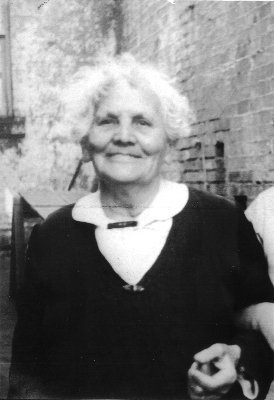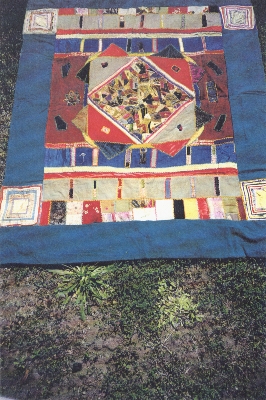Quilt No.734MF - Maria Finlayson
1730 x 1325mm
The quilt was made by Margaret Smith (1857-1950) probably in Sydney and probably in the 1920s or 1930s. The quilt was owned in the past by Victoria Caines (maker's daughter) then Walter and June Caines (maker's grandson) and now Maria Finlayson, great-grand-daughter of the maker.
"My Father (maker's grandson) was in the Boyt Scouts, so I suspect the Scout badge on the quilt was his. Margaret Smith was the generation that was devoted to the royal family and thought of England as the Mother country, though they were born and bred in Australia and had never been there. This could explain the union jack.
She had a hard life. She returned to Australia with her only child (my grandmother) after some time in New Zealand. Her husband was supposed to meet her on the wharf but her didn't show up and was never heard of again. She worked as a cleaner to support herself and her daughter. She was a strict Methodist and a very gentle person. My father had very fond memories of his tiny grandmother."
[Maria Finlayson 28.4.00]

Related Quilts:
2000 x 1925mm
2400 x 2260mm
2175 x 1625mm
1500 x 1040mm
1525 x 1220mm








